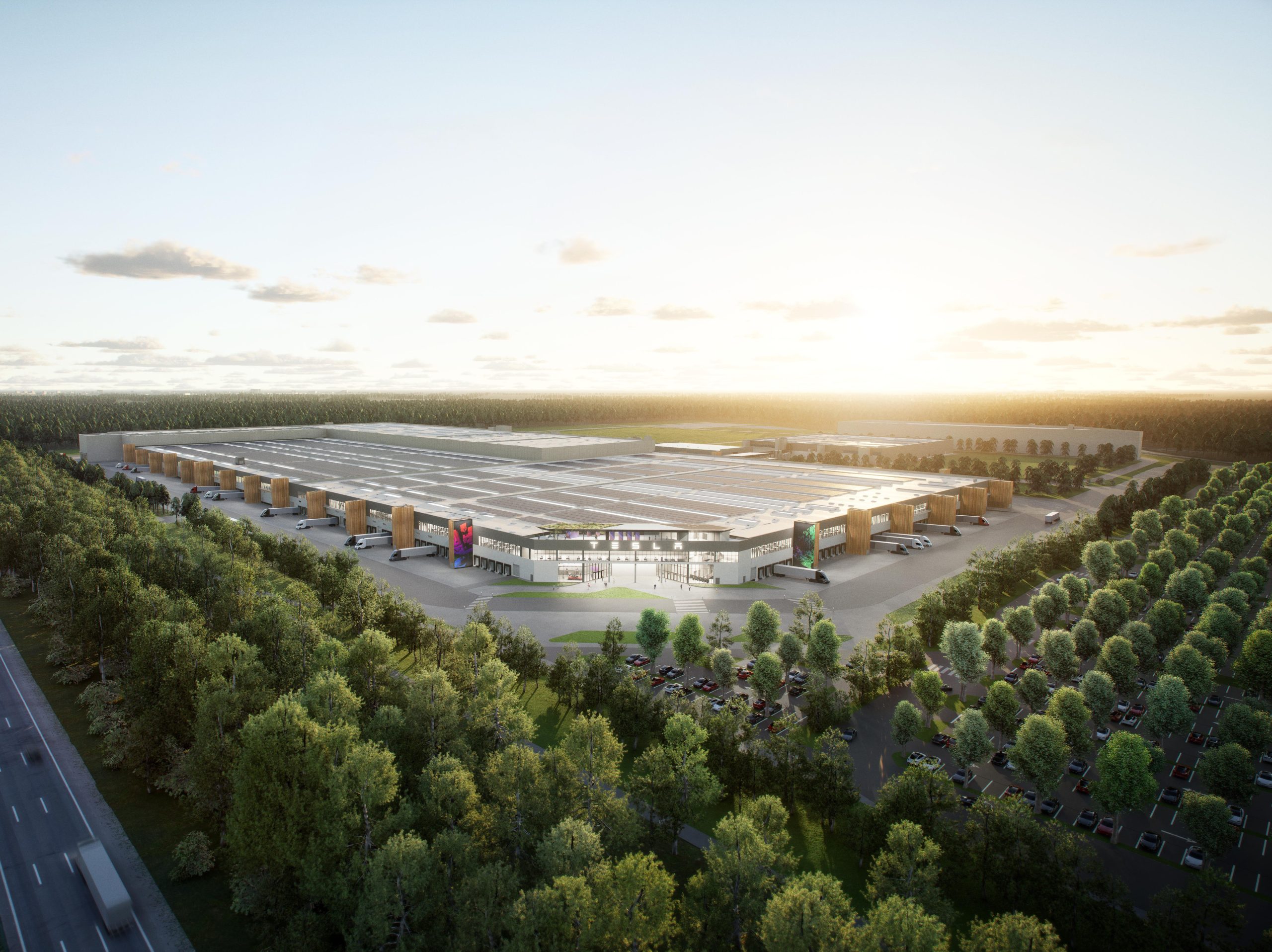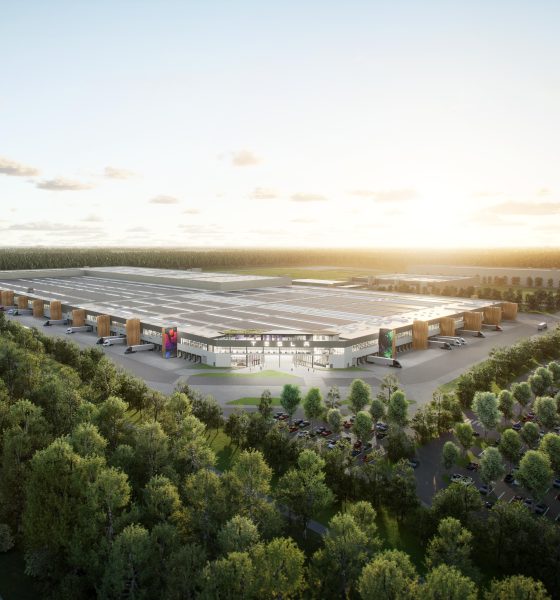A German Minister has shared some insights about his political disagreements with Elon Musk and U.S. President-elect Donald Trump, going on to add that he “still values” the Tesla CEO and the company’s Gigafactory in Brandenburg.
In an interview shared by German outlet Tagesspiegel on Monday, Brandenburg Economic Minister Jörg Steinbach said that he wouldn’t be willing to congratulate Musk on a Trump victory, calling the win “highly problematic” and saying that he has directly argued with the Tesla CEO in recent months. Steinbach also tells the outlet that he still values Musk as an investor, entrepreneur, and innovator, adding that Musk was even receptive to some of his criticisms.
The Minister also says he has been in regular contact with Musk over long text messages in the months leading up to the election, ultimately noting that he would not congratulate the Tesla CEO on a Trump victory:
I will not congratulate him on this election result either. Donald Trump’s victory is highly problematic for us. I have had contact with Elon Musk more often in the past months, I have argued intensively with him.
I have responded to his comments on the AfD, but also to others. I have made it clear that I think all this is fundamentally written—that for us Donald Trump is not an advocate for democracy, but an autocratic president.
He was able to deal with my criticism. Elon Musk has a completely different view of this. We agreed that we did not come together. In English, they say, agree to disagree.
Tesla’s Giga Berlin and police are still dealing with a protestor problem
Still, Steinbach also went on to echo some concerns about bureaucracy, saying that, while it may irritate some, he believes that even Germany could use a little less bureaucracy. Despite this, he thinks Musk will soon see some of Trump’s issues with climate protections, and will go on to retreat from his support for the President-elect in just a few months:
But my prognosis is that after a few months, Musk will retreat frustratedly. He will notice that certain positions of Donald Trump are totally contrary to his convictions, for example in climate protection. And he will find that administrative, political rules, for example, are not easy to put on strength for spending money.
The Minister notes that, while Musk’s support for Trump could affect who buys a Tesla in Germany, the company’s Gigafactory is just one of many throughout the world, and he doesn’t expect it to have a negative impact on sustainable transportation in the country. He also says that Tesla could continue to play an important role in the ongoing crisis across the automotive industry, adding that the company is still looking to expand its facility in Grünheide in the coming months.
Germany’s recent automotive struggles and what role Tesla could play
Volkswagen and other automakers, both in Germany and elsewhere, have struggled amidst the electric vehicle (EV) transition, with some even set to close down factories. One example includes VW’s Potsdam Design Center, along with another factory from the company in Belgium that may move future EV production to its factories in Germany or Slovakia.
Steinach says he is in favor of electrification, adding that he thinks the German automotive industry has been effectively asleep for the past decade. Meanwhile, battery projects in Germany have been put on hold for at least a year, though he says there is light at the end of the tunnel. While he has previously said that every fifth company or so may unfortunately disappear, he also notes that companies should follow Volvo’s example in choosing to stop building internal combustion engines (ICEs) and to pour that effort into EVs.
Even as some companies may disappear, the outlook isn’t all bleak. The Minister also says that Tesla’s economic influence in the country is still underrated, and workers that become unemployed in the EV transition may find a home at the U.S. automaker’s Grünheide plant, which employs around 12,000 workers.
What are your thoughts? Let me know at zach@teslarati.com, find me on X at @zacharyvisconti, or send us tips at tips@teslarati.com.
Tesla Giga Berlin proposed expansion’s failed community vote can be an opportunity: Minister

Elon Musk
Starlink passes 9 million active customers just weeks after hitting 8 million
The milestone highlights the accelerating growth of Starlink, which has now been adding over 20,000 new users per day.

SpaceX’s Starlink satellite internet service has continued its rapid global expansion, surpassing 9 million active customers just weeks after crossing the 8 million mark.
The milestone highlights the accelerating growth of Starlink, which has now been adding over 20,000 new users per day.
9 million customers
In a post on X, SpaceX stated that Starlink now serves over 9 million active users across 155 countries, territories, and markets. The company reached 8 million customers in early November, meaning it added roughly 1 million subscribers in under seven weeks, or about 21,275 new users on average per day.
“Starlink is connecting more than 9M active customers with high-speed internet across 155 countries, territories, and many other markets,” Starlink wrote in a post on its official X account. SpaceX President Gwynne Shotwell also celebrated the milestone on X. “A huge thank you to all of our customers and congrats to the Starlink team for such an incredible product,” she wrote.
That growth rate reflects both rising demand for broadband in underserved regions and Starlink’s expanding satellite constellation, which now includes more than 9,000 low-Earth-orbit satellites designed to deliver high-speed, low-latency internet worldwide.
Starlink’s momentum
Starlink’s momentum has been building up. SpaceX reported 4.6 million Starlink customers in December 2024, followed by 7 million by August 2025, and 8 million customers in November. Independent data also suggests Starlink usage is rising sharply, with Cloudflare reporting that global web traffic from Starlink users more than doubled in 2025, as noted in an Insider report.
Starlink’s momentum is increasingly tied to SpaceX’s broader financial outlook. Elon Musk has said the satellite network is “by far” the company’s largest revenue driver, and reports suggest SpaceX may be positioning itself for an initial public offering as soon as next year, with valuations estimated as high as $1.5 trillion. Musk has also suggested in the past that Starlink could have its own IPO in the future.
News
NVIDIA Director of Robotics: Tesla FSD v14 is the first AI to pass the “Physical Turing Test”
After testing FSD v14, Fan stated that his experience with FSD felt magical at first, but it soon started to feel like a routine.

NVIDIA Director of Robotics Jim Fan has praised Tesla’s Full Self-Driving (Supervised) v14 as the first AI to pass what he described as a “Physical Turing Test.”
After testing FSD v14, Fan stated that his experience with FSD felt magical at first, but it soon started to feel like a routine. And just like smartphones today, removing it now would “actively hurt.”
Jim Fan’s hands-on FSD v14 impressions
Fan, a leading researcher in embodied AI who is currently solving Physical AI at NVIDIA and spearheading the company’s Project GR00T initiative, noted that he actually was late to the Tesla game. He was, however, one of the first to try out FSD v14.
“I was very late to own a Tesla but among the earliest to try out FSD v14. It’s perhaps the first time I experience an AI that passes the Physical Turing Test: after a long day at work, you press a button, lay back, and couldn’t tell if a neural net or a human drove you home,” Fan wrote in a post on X.
Fan added: “Despite knowing exactly how robot learning works, I still find it magical watching the steering wheel turn by itself. First it feels surreal, next it becomes routine. Then, like the smartphone, taking it away actively hurts. This is how humanity gets rewired and glued to god-like technologies.”
The Physical Turing Test
The original Turing Test was conceived by Alan Turing in 1950, and it was aimed at determining if a machine could exhibit behavior that is equivalent to or indistinguishable from a human. By focusing on text-based conversations, the original Turing Test set a high bar for natural language processing and machine learning.
This test has been passed by today’s large language models. However, the capability to converse in a humanlike manner is a completely different challenge from performing real-world problem-solving or physical interactions. Thus, Fan introduced the Physical Turing Test, which challenges AI systems to demonstrate intelligence through physical actions.
Based on Fan’s comments, Tesla has demonstrated these intelligent physical actions with FSD v14. Elon Musk agreed with the NVIDIA executive, stating in a post on X that with FSD v14, “you can sense the sentience maturing.” Musk also praised Tesla AI, calling it the best “real-world AI” today.
News
Tesla AI team burns the Christmas midnight oil by releasing FSD v14.2.2.1
The update was released just a day after FSD v14.2.2 started rolling out to customers.

Tesla is burning the midnight oil this Christmas, with the Tesla AI team quietly rolling out Full Self-Driving (Supervised) v14.2.2.1 just a day after FSD v14.2.2 started rolling out to customers.
Tesla owner shares insights on FSD v14.2.2.1
Longtime Tesla owner and FSD tester @BLKMDL3 shared some insights following several drives with FSD v14.2.2.1 in rainy Los Angeles conditions with standing water and faded lane lines. He reported zero steering hesitation or stutter, confident lane changes, and maneuvers executed with precision that evoked the performance of Tesla’s driverless Robotaxis in Austin.
Parking performance impressed, with most spots nailed perfectly, including tight, sharp turns, in single attempts without shaky steering. One minor offset happened only due to another vehicle that was parked over the line, which FSD accommodated by a few extra inches. In rain that typically erases road markings, FSD visualized lanes and turn lines better than humans, positioning itself flawlessly when entering new streets as well.
“Took it up a dark, wet, and twisty canyon road up and down the hill tonight and it went very well as to be expected. Stayed centered in the lane, kept speed well and gives a confidence inspiring steering feel where it handles these curvy roads better than the majority of human drivers,” the Tesla owner wrote in a post on X.
Tesla’s FSD v14.2.2 update
Just a day before FSD v14.2.2.1’s release, Tesla rolled out FSD v14.2.2, which was focused on smoother real-world performance, better obstacle awareness, and precise end-of-trip routing. According to the update’s release notes, FSD v14.2.2 upgrades the vision encoder neural network with higher resolution features, enhancing detection of emergency vehicles, road obstacles, and human gestures.
New Arrival Options also allowed users to select preferred drop-off styles, such as Parking Lot, Street, Driveway, Parking Garage, or Curbside, with the navigation pin automatically adjusting to the ideal spot. Other refinements include pulling over for emergency vehicles, real-time vision-based detours for blocked roads, improved gate and debris handling, and Speed Profiles for customized driving styles.










